What is behind the US-Iran prisoner swap?
Rare act of cooperation between longtime foes could signal thawing relations
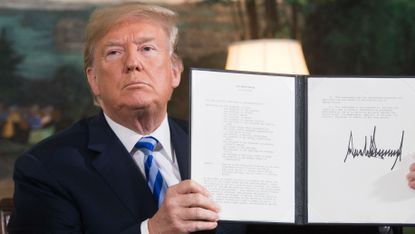
A rare prisoner exchange between the US and Iran could have been orchestrated by Tehran to deflect attention from a recent brutal crackdown on mass domestic protests, the Trump administration believes.
In what Reuters called “a rare act of cooperation between two longtime foes whose ties have worsened since President Donald Trump took office”, Iran released Xiyue Wang, a US researcher who had been held for three years on spying charges.
The US followed suit, freeing Iranian scientist Massoud Soleimani who had been facing charges of violating US sanctions against Tehran.
Subscribe to The Week
Escape your echo chamber. Get the facts behind the news, plus analysis from multiple perspectives.

Sign up for The Week's Free Newsletters
From our morning news briefing to a weekly Good News Newsletter, get the best of The Week delivered directly to your inbox.
From our morning news briefing to a weekly Good News Newsletter, get the best of The Week delivered directly to your inbox.
The releases came after four weeks of intensive negotiations facilitated by Switzerland, which has represented US diplomatic interests in Tehran since Washington cut diplomatic ties shortly after the 1979 Islamic Revolution.
A senior US official told CNN that it was hoped Wang’s release would lead to the freeing of other Americans held in Iran and that it was a sign Tehran was willing to discuss other issues.
The Financial Times says the prisoner swap “comes as tension remains high between Washington and Tehran, particularly as Iran faces increasing economic hardship after Trump withdrew from the 2015 Iran nuclear deal and reimposed tough sanctions”.
This has sent Iran’s currency into free fall, driving inflation above 40% and increasing import prices. Iran has recently been hit by widespread public protests over rising petrol prices, an increase the BBC reports is “partly linked to the US sanctions”.
–––––––––––––––––––––––––––––––For a round-up of the most important stories from around the world - and a concise, refreshing and balanced take on the week’s news agenda - try The Week magazine. Start your trial subscription today –––––––––––––––––––––––––––––––
US officials have stressed that Washington did not provide any money, or ease sanctions, to secure Wang’s release. The New York Times reports that Trump administration officials believe Iran may have released the US researcher “in order to soften its image and deflect attention from a recent brutal crackdown on mass domestic protests”.
“American officials believe the unrest has left hundreds dead and as many as 7,000 imprisoned”, the newspaper adds.
The diplomatic breakthrough will pile further pressure on the British government to secure the release of Iranian-British aid worker Nazanin Zaghari-Ratcliffe, who has been detained in Iran since April 2016.
Create an account with the same email registered to your subscription to unlock access.
Sign up for Today's Best Articles in your inbox
A free daily email with the biggest news stories of the day – and the best features from TheWeek.com
-
 'He adored Trump, and then rejected him'
'He adored Trump, and then rejected him'Today's Newspapers A roundup of the headlines from the US front pages
By The Week Staff Published
-
 The Thursday Murder Club: who's in the film and what we can expect
The Thursday Murder Club: who's in the film and what we can expectSpeed Read Author Richard Osman reveals starry cast set to play his 'septuagenarian sleuths'
By Adrienne Wyper, The Week UK Published
-
 The toilet roll tax: UK's strange VAT rules
The toilet roll tax: UK's strange VAT rulesThe Explainer 'Mysterious' and 'absurd' tax brought in £168 billion to HMRC last year
By The Week UK Published
-
 Flies attack Donald Trump
Flies attack Donald TrumpTall Tales And other stories from the stranger side of life
By Chas Newkey-Burden, The Week UK Published
-
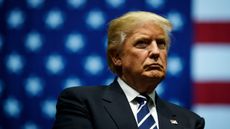 Donald Trump criminal charges for 6 January could strain 2024 candidacy
Donald Trump criminal charges for 6 January could strain 2024 candidacySpeed Read Former president’s ‘pettifoggery’ won’t work well at trial, said analyst
By Chas Newkey-Burden Published
-
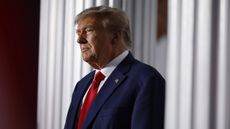 Donald Trump in the dock: a fraught moment for US democracy
Donald Trump in the dock: a fraught moment for US democracyTalking Point There is speculation that former president could end up running his 2024 election campaign from behind bars
By The Week Staff Published
-
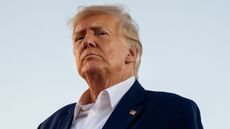 Donald Trump indicted again: is latest threat of prison a game changer?
Donald Trump indicted again: is latest threat of prison a game changer?Today's Big Question The former president ‘really could be going to jail’ but Republicans ‘may not care’ say commentators
By Chas Newkey-Burden Published
-
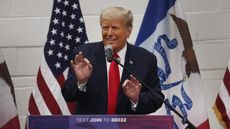 Trump told he could face charges over classified Mar-a-Lago documents
Trump told he could face charges over classified Mar-a-Lago documentsSpeed Read A second criminal indictment is on the cards for the former US president and current Republican frontrunner
By Sorcha Bradley Published
-
 Iran claims to have built its first hypersonic missile
Iran claims to have built its first hypersonic missileSpeed Read
By Justin Klawans Published
-
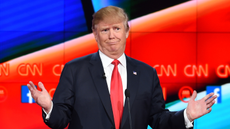 The return of Donald Trump to prime-time television
The return of Donald Trump to prime-time televisionfeature CNN executives have been condemned over the former president’s televised town hall
By The Week Staff Published
-
 Durham criticizes FBI, offers little new in final report on 4-year Trump-Russia investigation review
Durham criticizes FBI, offers little new in final report on 4-year Trump-Russia investigation reviewSpeed Read
By Peter Weber Published